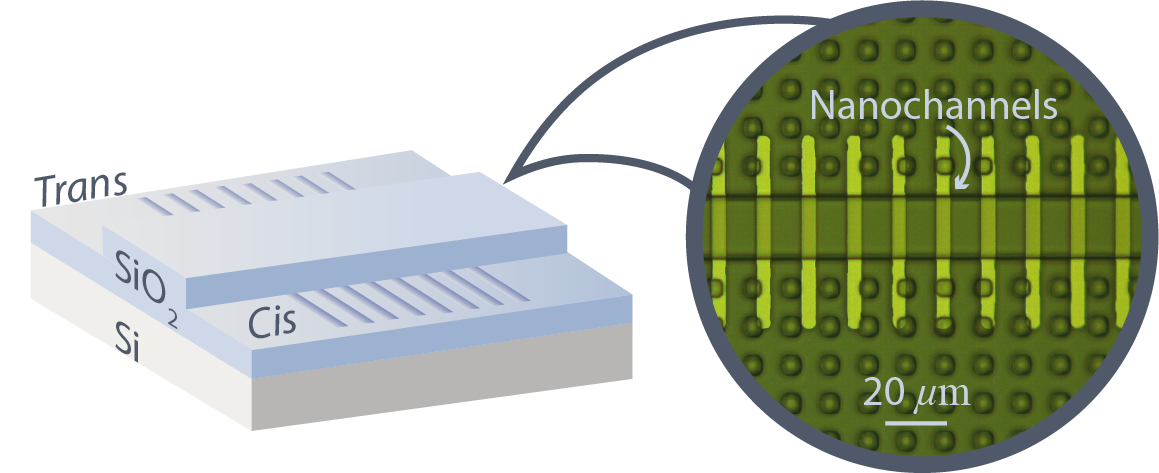Nanofluidics
Solid-state nanofluidic devices as model systems
We lack a holistic understanding of many fundamental transport mechanisms that occur in nanoporous systems. This is particularly prevalent for charge-based phenomena. In industrially relevant polymer-based systems where charge can greatly influence performance (e.g., membranes used for resource recovery, desalination, and electrolysis), the sensitivity of polymeric matrices to their environment makes it difficult to deconvolute highly coupled transport phenomena and extract useful insight. Conversely, solid-state devices offer well-defined and precisely controlled platforms for studying nanofluidic ion transport that, with recent advances, show promise to be extended to mirror transport in nanoconfined polymeric systems.
Illustration of solid-state nanofluidic device, which is composed of an array of 20-nm high, 4-μm wide, and 20-μm long nanochannels that separate the cis and trans reservoirs where electrolyte solutions are exchanged. The optical topographic image (right) shows the nanochannels prior to etching. Image taken from C.L. Ritt et al., ACS Nano (2022).
